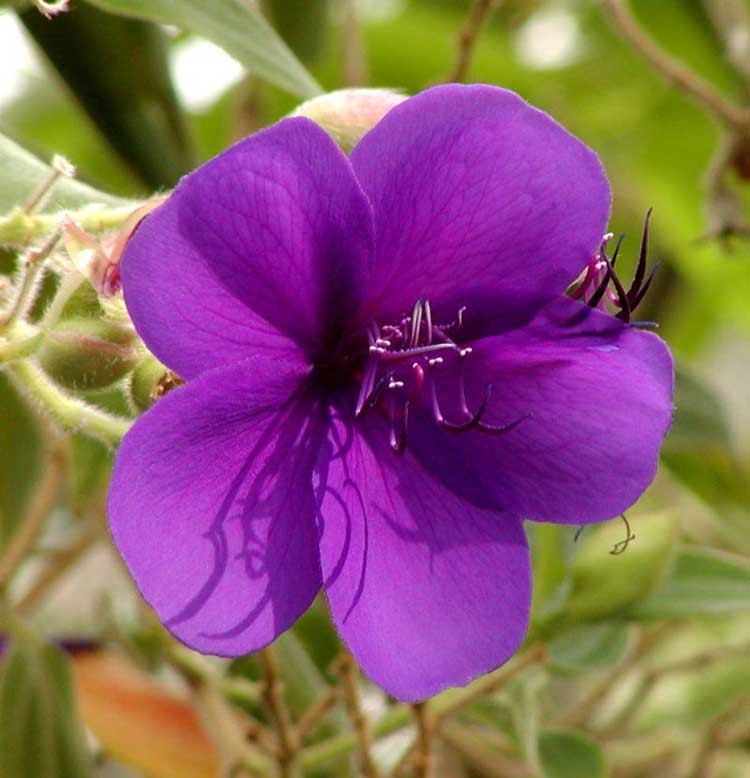
Pleroma semidecandrum (*)
Classification System: APG IV
Superregnum: Eukaryota
Regnum: Plantae
Cladus: Angiosperms
Cladus: Eudicots
Cladus: Core eudicots
Cladus: Rosids
Cladus: Eurosids II
Ordo: Myrtales
Familia: Melastomataceae
Subfamilia: Melastomatoideae
Tribus: Melastomateae
Genus: Pleroma
Species: Pleroma semidecandrum
Name
Pleroma semidecandrum (Mart. & Schrank ex DC.) Triana, Trans. Linn. Soc. London, Bot. 28(1): 41. (1872)
Synonyms
Basionym
Lasiandra semidecandra Mart. & Schrank ex DC. Prodr. (Candolle) 3: 129. (1828)
Homotypic
Tibouchina semidecandra (Mart. ex DC.) Cogn., (1885)
Heterotypic
Lasiandra macrocarpa Naudin
References
Triana, J.J. 1872. Transactions of the Linnean Society of London 28(1): 41.
Govaerts, R. et al. 2020. Pleroma semidecandrum in Kew Science Plants of the World online. The Board of Trustees of the Royal Botanic Gardens, Kew. Published on the internet. Accessed: 2020 Nov. 21. Reference page.
International Plant Names Index. Nov.. Pleroma semidecandrum. Published online. Accessed: 21 Nov..
Tropicos.org Nov. Pleroma semidecandrum. Missouri Botanical Garden. Published on the internet. Accessed: {{{4}}} 19 Nov.
Vernacular names
English: Princess Flower, Glory Bush, Lasiandra
The princess flower, glory bush, or lasiandra, is a flowering plant in the family Melastomataceae.
Description
It is a sprawling, evergreen shrub or small ornamental tree native to Brazil and ranges from 10 to 15 feet (20 feet with proper training) in height. The dark green, velvety, four to six-inch-long leaves have several prominent longitudinal veins instead of the usual one, and are often edged in red.
Large, royal purple blossoms, flaring open to five inches, are held on terminal panicles above the foliage, creating a spectacular sight when in full bloom. Some flowers are open throughout the year but they are especially plentiful from May to January.
Cultivation
Plant in full sun for best color and maximum flowering. They can tolerate the shade but will not thrive. Princess-Flower is ideal for the mixed shrubbery border or used in small groupings to compound the impact of bloom-time.
Plant in most soils with good drainage and a slightly acid mix is even better. Nematodes can affect Tibouchina and over watering can contribute to mushroom root-rot. It can be trimmed to any size and still put on a vivid, year-long flower display.
Chemistry
The princess flower, contains the dimeric ellagitannin nobotanin B.[1]
References
Revised structure of nobotanin B, a dimeric ellagitannin of Tibouchina semidecandra. Yoshida T, Haba K, Shingu T and Okuda T, Heterocycles, 1987, volume 26, no 11, pages 2845-2848, INIST:7791227
Retrieved from "http://en.wikipedia.org/"
All text is available under the terms of the GNU Free Documentation License

